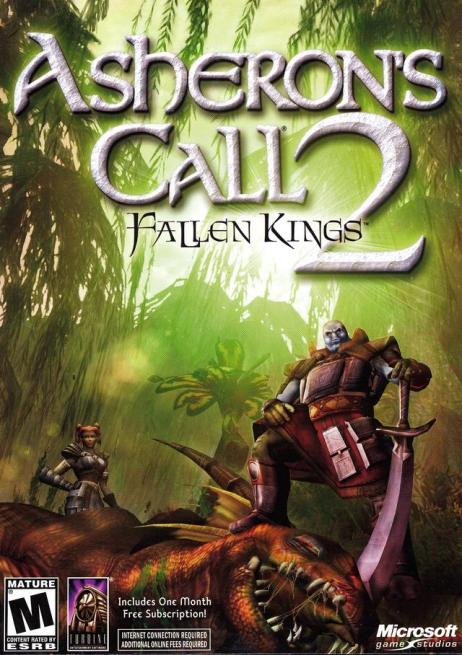Asheron's Call 2: Fallen Kings Preview
-
Category: PreviewsHits: 5993

Article Index
Page 1 of 2
Late last week I was given the chance to preview Asheron's Call 2 during the end of beta events. I knew little about what features and game mechanics were install for me. The invitation to preview the game did come with a couple of pages of basic information and a list of points of interest from Microsoft Games. While downloading the Asheron's Call II beta, I quickly read through the information, and learned that an Admin character had already been made for me. This character had been created to enable me to teleport around the world viewing different aspects of the game while "cloaked", so as not to interrupt beta testers.My first impression of Asheron's Call II was a little discouraging. Due to the system requirements to play, I had to tweak my computer before I could login. The system requirements are Pentium III 733 or higher CPU, 256MB RAM, 3D Graphics card and DirectX 8.1. The computer that I ran this game on is significantly higher than these requirements, but the Configuration screen still listed my graphics capability as Low. Microsoft Games does provide numerous options for game configuration, such as video, resolution, overall graphics quality, sound, music, and network overrides. I was very impressed with the easy interface; everything you will need to play the game is accessible on the Options Panel. I was astounded at the quality of the graphics, which have to be the best that I have ever seen in any PC game. The state-of-the-art 3D graphics allow for innovative combat and game play. Dynamic graphics allow the developers to implement monthly updates and change the world depending on player activity and create world effects. They are able to add mines, remove towns, and change monster interaction.
The first screen that you are presented with is Character Creation. There are four slots to fill with characters from the three different races, Human, Tumeroks and Lugians. Male and female avatars are available for each class. These can be fully customized by changing height, build, skin tone, hair, face and clothing colors. There also is the option to have a randomized character created with your selected options or random from all options. This is also the time to carefully choose your characters name. Every player begins in the Training Halls. This is a starter dungeon that leads you through the basic game mechanics of walking, fighting, and chatting. In order to leave this dungeon you must complete a quest given at the end. Travel through the world is made possible by using Portals. These are located throughout the world, each indicating where it will take you. Also located across the world are Lifestones, which is where you bind to return after death or can be player activated.
The combat system focuses on real-time tactical decisions. AI creatures have the ability to learn strategy. Each time you engage a creature it is learning how you fight. It can change how it responds to your attack. I noticed several times that mobs would gather together if I tried to fight just one. This gives the game an exciting combat aspect. No longer will you mindlessly bash mobs. The combat system is comprised of three basic skills, melee, magic and missile. With each successful kill you gain training credits. These are used to train new skills or level current ones. In the Skill Panel each current skill is listed showing what level it is at and what is needed to learn new skills. All skills can be easily dropped into a quickbar for easy access. Different player level vaults are placed throughout the world. Defeating a certain monster and obtaining a Glyph gain entrance. Vaults can only be completed once and some have higher-level mobs require a Fellowship. Fellowships are groups of players join together on a temporary basis. You can opt to share experience or not. If you do not share experience then each member earns experience as they would if soloing.
Crafting will be a major part of the game. At the time of release there will be no NPCs (expected at a later date). All items must either be crafted or gained through defeating mobs. Crafting is divided into three sections, gambling, vocations and recipes. Gambling lets you use gold to gain temporary benefits to yourself, armor or items. But it does cost quite a bit of gold. Vocations consist of resource gathering, item manufacturing, tool making, and quests. Recipes give you the ability to complete desired crafting activities. There is at least one recipe for nearly all vocations. After completing a number of items you automatically gain higher skills. Resources such as gold, wood, iron, crystal and stone are needed to make items. A Workshop is also needed; these are placed most often in or around towns. Players must provide fuel to keep them working and make them grow more powerful. More powerful Workshops promote the town they are near. Their appearance changes the more powerful they become.


